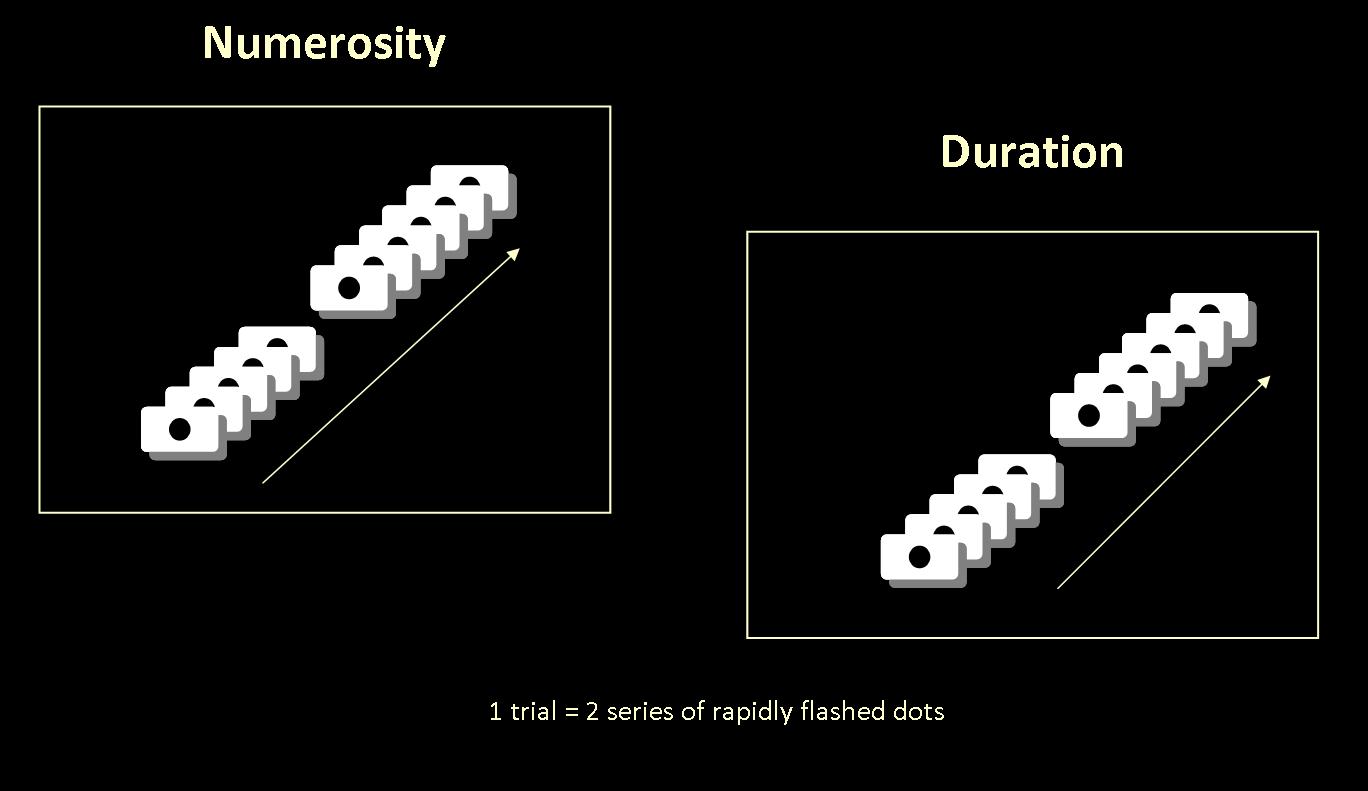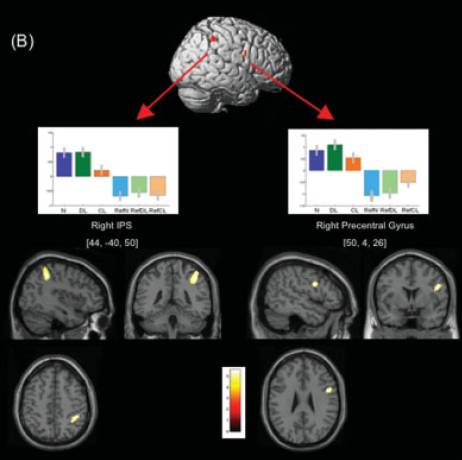| Adults, infants and animals process and represent numerosity, time and length and they use these quantitative dimensions to guide learning and behaviour. From a broad range of behavioural, physiological, developmental, lesional and neuroanatomical data on magnitude processing, Walsh (2003) recently proposed the existence of a generalised magnitude system located in the parietal cortex.
By using behavioral and neuroimaging techniques (fMRI, TMS, ERPs,...), the main aim of our work is to lead to a better understanding of the representational and cerebral organisation of the magnitude system. Members active in this area include : Michael Andres, Valerie Dormal, Stéphane Grade, Nicolas Masson, Mauro Pesenti |
Links between Numerosity and Time
|
Behavioral study
For exemple, in this first study, the existence of a possible common mechanism for duration and numerosity processing was tested with a Stroop task. Participants had to compare either the duration or the numerosity of sequences of flashing dots for which the duration and numerosity were independently manipulated to create congruent, incongruent or neutral pairs. Results show that the numerical cues interfered with duration processing, whereas the temporal cues did not interfere with numerosity processing. These findings extend the idea of an automatic access to magnitude to non-symbolic sequentially presented material, and reflect a probable difference in the mandatory processing of numerosity and duration.
° Dormal, V., Seron, X., & Pesenti, M. (2006). Numerosity-duration interference: A Stroop experiment. Acta Psychologica, 121, 109-124. |
|
Links between Numerosity and Length
|
|
fMRI study In this study, functional magnetic resonance imaging was used to localize the cerebral network involved in processing both numerosity and length. Blood oxygenation level-dependent signal changes were measured while healthy volunteers were making numerosity comparisons on linear arrays of dots, and length comparisons on discrete linear arrays of dots and continuous rectangles. The results show the bilateral involvement of parietal regions around the intraparietal sulci in explicit and implicit processing of numerosity, and a right lateralized occipitoparietal network activation in length processing; numerosity and length processing both activate the right IPS and the precentral gyrus. By excluding the mandatory intrinsic spatial processing of arrays, we demonstrate that the left IPS is involved in numerosity processing only, whereas the right IPS underlies a common processing mechanism or representation of spatial and numerical magnitude. ° Dormal, V., & Pesenti, M. (2009). Common and specific contributions of the intraparietal sulci to numerosity and length processing. Human Brain Mapping, 30(8), 2466-2476. |




